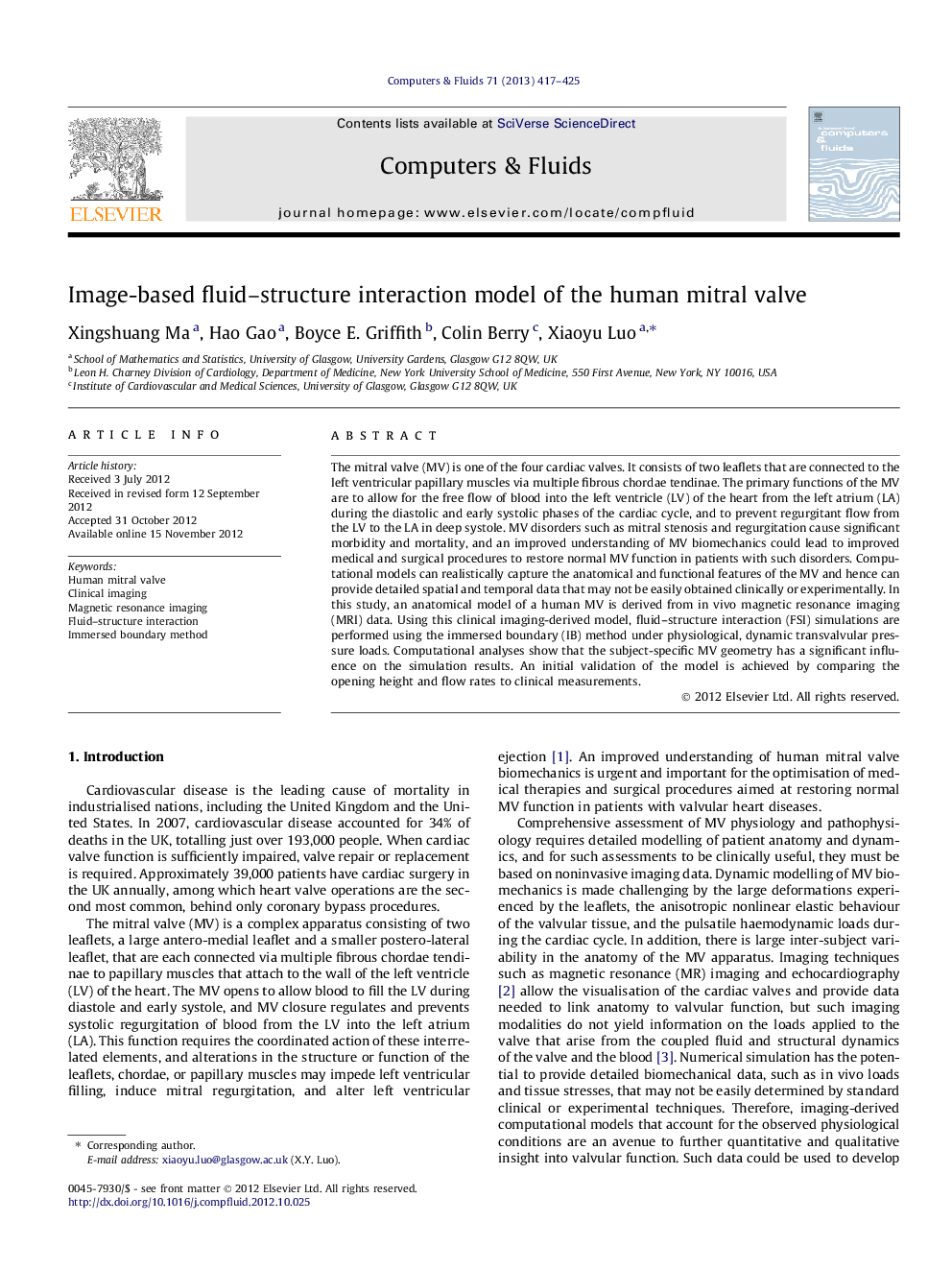| کد مقاله | کد نشریه | سال انتشار | مقاله انگلیسی | نسخه تمام متن |
|---|---|---|---|---|
| 756725 | 1462739 | 2013 | 9 صفحه PDF | دانلود رایگان |

The mitral valve (MV) is one of the four cardiac valves. It consists of two leaflets that are connected to the left ventricular papillary muscles via multiple fibrous chordae tendinae. The primary functions of the MV are to allow for the free flow of blood into the left ventricle (LV) of the heart from the left atrium (LA) during the diastolic and early systolic phases of the cardiac cycle, and to prevent regurgitant flow from the LV to the LA in deep systole. MV disorders such as mitral stenosis and regurgitation cause significant morbidity and mortality, and an improved understanding of MV biomechanics could lead to improved medical and surgical procedures to restore normal MV function in patients with such disorders. Computational models can realistically capture the anatomical and functional features of the MV and hence can provide detailed spatial and temporal data that may not be easily obtained clinically or experimentally. In this study, an anatomical model of a human MV is derived from in vivo magnetic resonance imaging (MRI) data. Using this clinical imaging-derived model, fluid–structure interaction (FSI) simulations are performed using the immersed boundary (IB) method under physiological, dynamic transvalvular pressure loads. Computational analyses show that the subject-specific MV geometry has a significant influence on the simulation results. An initial validation of the model is achieved by comparing the opening height and flow rates to clinical measurements.
► Derived a human mitral valve (MV) anatomical model from in vivo magnetic resonance imaging (MRI) data.
► Performed the fluid-structure interaction (FSI) simulations under physiological transvalvular pressure load.
► Show that subject-specific (MV) geometry can reproduce observed valve shape.
► Validated the model with measured flow rate from the same volunteer.
► Setup a framework for patient specific modelling with clinical applications.
Journal: Computers & Fluids - Volume 71, 30 January 2013, Pages 417–425